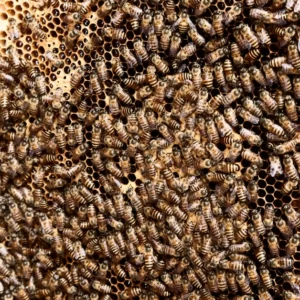Table of Contents
Seborrheic Dermatitis: An Overview
Seborrheic dermatitis is a common skin ailment that can cause discomfort and embarrassment. It is characterized by redness, itching, and peeling of the skin, particularly in areas with a higher concentration of oil glands, such as the scalp, face, and chest. Several factors, including genetics, stress, climatic changes, and yeast overgrowth, can contribute to the development of seborrheic dermatitis. While there are medicinal options available, many people prefer natural remedies to alleviate symptoms and improve skin health.
The Potential of Manuka Honey
Manuka honey, derived from the nectar of the Manuka tree’s blooms, has gained attention for its therapeutic and antibacterial properties. It shows promise as a treatment for seborrheic dermatitis due to its antibacterial, anti-inflammatory, and moisturizing qualities. It has the potential to soothe irritation, reduce redness, and hydrate the skin, providing relief for individuals suffering from this condition.
How to Use Manuka Honey for Scalp Seborrheic Dermatitis
-
Patch Test: Before applying Manuka honey to the affected areas, perform a patch test on a small area of skin to ensure you do not experience an allergic reaction.
-
Cleaning: Gently cleanse the affected area with a mild, fragrance-free cleanser. Pat the skin dry after cleansing.
-
Application: Apply a thin layer of Manuka honey directly to the affected areas. To achieve a spreadable consistency, mix a small amount of Manuka honey with water.
-
Massage: Gently massage the honey into the skin using circular motions. Allow it to sit on the skin for 20 to 30 minutes.
-
Rinse: Rinse off the honey with lukewarm water, using gentle circular motions. Pat the skin dry with a fresh, soft cloth.
-
Moisturize: Apply a fragrance-free, non-comedogenic moisturizer to seal in moisture and further soothe the skin.
Frequency of Use
Manuka honey can be applied topically twice a week to treat seborrheic dermatitis on the scalp. However, it is important to pay attention to how your skin responds, as individual reactions may vary. If you experience any exacerbated adverse reactions or symptoms, discontinue use and consult a dermatologist.
Conclusion
In conclusion, Manuka honey can provide symptomatic relief for scalp seborrheic dermatitis. Its natural antibacterial and moisturizing properties make it an appealing alternative to traditional treatments. However, it is essential to use it cautiously and in conjunction with other skincare practices, a balanced diet, and expert medical advice. Consulting a dermatologist before incorporating Manuka honey into your skincare regimen ensures that you make choices based on your unique condition.
It is important to note that everyone’s skin is different, and what works for one person may not work for another. By adopting a holistic approach and combining natural remedies with professional guidance, you can find relief from seborrheic dermatitis and pave the way for healthier, happier skin.



